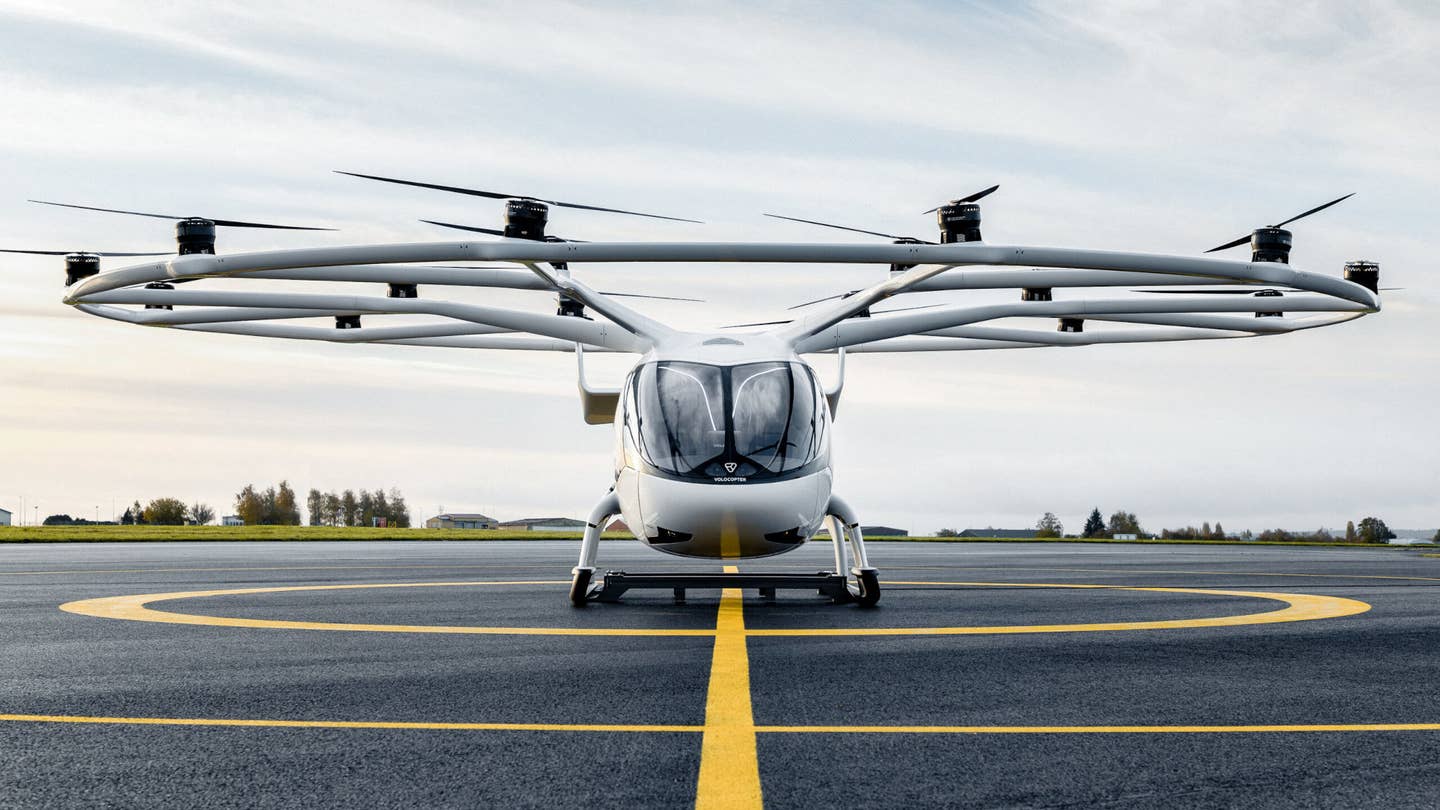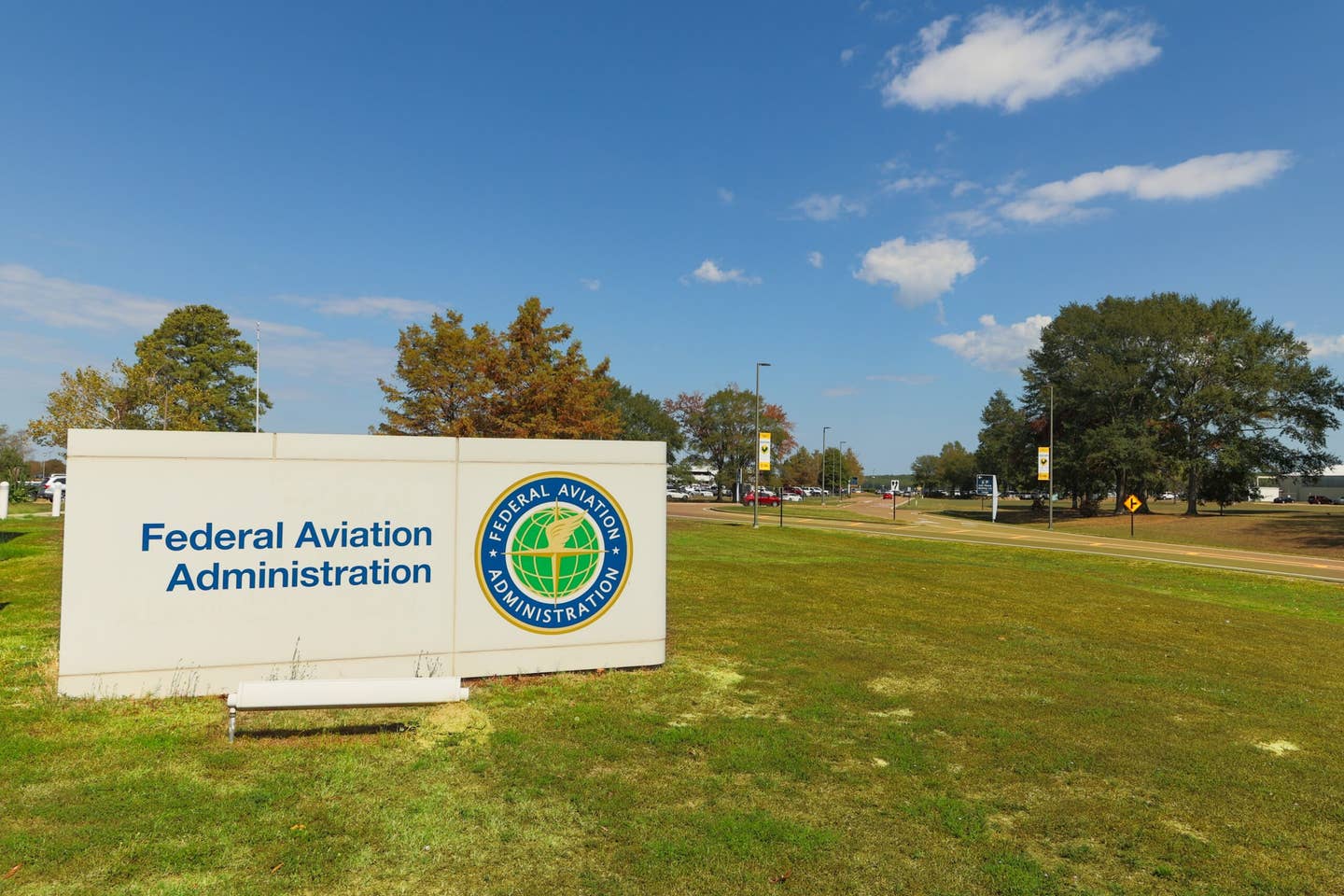EASA Charts Future of Drone, AAM Industry With Proposed Framework
The European regulator released a 58-page proposal to craft rules and regulations for drones and eVTOL aircraft, including air taxis.

German manufacturer Volocopter’s VoloCity air taxi is one of many expected to fly at the 2024 Paris Olympic Games. [Courtesy: Volocopter]
The FAA made a big splash when it unveiled its Innovate28 plan for advanced air mobility (AAM) operations with electric vertical takeoff and landing (eVTOL) aircraft at scale by 2028. But while Innovate28 is just that—a plan—the agency’s friend across the Atlantic is already proposing hard requirements for AAM certification, operations, and maintenance.
The European Union Aviation Safety Agency (EASA) on Thursday shared its final opinion on rules and regulations for eVTOL air taxis, drones, and other emerging aircraft with the European Commission. Now, the ball is in the Commission’s court as it determines whether to accept EASA’s policy recommendations.
Opinion No 03/2023 lays out a comprehensive regulatory framework for safe operations of new aircraft types. It introduces requirements for piloted electric air taxi operations, flight crew licensing, air traffic management, and standardized European rules of the air (SERA). The proposal also suggests a criteria and process for the certification and maintenance of remotely piloted drones.
“Such developments, stimulated by a global wave of digitalisation and automation, have reinforced the impetus for the creation of new air mobility concepts in the framework of the ‘smart, green and digital’ cities initiative led by the European Commission under the Sustainable and Smart Mobility Strategy,” the opinion reads.
Safety is at the core of the proposal. But EASA also hopes to promote the acceptance and adoption of emerging aircraft by E.U. citizens, accelerate innovation, harmonize regulatory frameworks across member states, and create an operation-centric, performance-based regulatory framework.
The proposal would complement existing EASA regulations and guidance on unmanned aircraft operations, vertiport design, VTOL certification, and unmanned traffic management in European U-space, protected airspace dedicated to complex operations. It was the last piece of rulemaking from Executive Director Patrick Ky, who was replaced by former Director of Safety and Strategy Management Luke Tytgat Friday.
“This is the last piece of regulation required to enable the launch of VTOL and air taxi services for Innovative Air Mobility,” Ky said. “Once this has passed into law, individual manufacturers and operators will of course need to obtain all the required approvals from various authorities, but the framework rules for these operations will be complete.”
EASA proposes amendments to several existing regulations and the establishment of a few new ones. Specifically, they address the initial airworthiness of unmanned aircraft systems (UAS), the continuing airworthiness of UAS operating in the specific category, and operational requirements applicable to manned VTOL aircraft.
The opinion was informed by about 1,300 comments from industry associations, national aviation authorities, aircraft manufacturers and operators, and service providers following the November 2022 release of a Notice of Proposed Amendment.
So without further adieu, let’s dig in.
New Terminology
EASA isn’t a fan of the term AAM. It argues the FAA terminology does not cover all of the operations that could be performed by these innovative new aircraft and that it limits oversight to operations involving the transport of people and cargo. So, it came up with some new terms.
The first is innovative air mobility, or IAM: the safe, secure, sustainable air mobility of passengers and cargo using emerging designs integrated into a multimodal transportation system.
Within IAM is urban air mobility (UAM), which includes operations conducted in, you guessed it, urban settings. These could be noncommercial, commercial air transport, or VTOL emergency medical services (VEMS) operators.
The other subset of IAM is non-urban air mobility (NAM), covering everything outside the domain of UAM. A UAM operator would be able to fly NAM services, but the reverse would be forbidden. IAM will also include drone operations in the higher-risk certified category.
EASA doesn’t use the term VTOL, either. It instead prefers VTOL-capable aircraft, or VCA, which it defines as “a power-driven, heavier-than-air aircraft, other than aeroplane or rotorcraft, capable of performing vertical take-off and landing by means of lift and thrust units used to provide lift during take-off and landing.”
The new VCA definition means EASA will need to modify its definition of helicopters in order to distinguish between the two aircraft types. It proposes doing so by limiting helicopters to two or fewer lift and thrust units and classifying them in the rotorcraft family.
Certifying New UAS
EASA wants to adopt an operation-centric and performance-based framework, with certification criteria that are proportionate to the type of intended operation and environment. VCA carrying passengers, for example, may be bound to stricter requirements. Manned VCA and complex and critical drone operations, in particular, could require hundreds of flight hours rather than tens.
The agency noted several “peculiarities” of VCA compared to conventional aircraft “that deserve a distinct approach in terms of certification and operational approach.” For example, they rely mainly on electric propulsion, use advanced fly-by-wire flight control systems, have reduced endurance, and require different infrastructure, ground handling, and pilot skills.
The opinion introduces a process for issuing type certification to unmanned aircraft and their control and monitoring units (CMUs). Notably, UAS will not need to be certified in the specific or certified categories. It also establishes eligibility requirements for CMUs and the guidelines for producing them, including a dedicated CMU type certification.
Continued Airworthiness
In EASA’s opinion (and probably that of many others), UAS need to be routinely assessed to make sure they’re safe to fly.
To do so, it proposed a delegated act (DA) that would ensure operators adhere to continuing airworthiness (CAW) requirements and an implementing act (IA) laying out provisions for authorities overseeing and enforcing the DA. The requirements cover certified category operations and high-risk operations in the specific category.
The agency also gave CAO.UAS organizations, which are responsible for ensuring CAW, the ability to award Permits to Fly in cases where a UAS airworthiness certification is invalid. This would keep uncertified aircraft that are still capable of safe flight in the air.
UAS operators would be obligated to contract one or more CAO.UAS organizations for CAW management and maintenance purposes. They might be asked to provide certain information, like airworthiness directives. Modifications and repairs of UAS components would need to be approved under Part 21. The document also set CAW requirements for CMUs.
VCA and Drone Operations
A big concern around AAM—excuse me, IAM—operations is the ability to certify an initial group of pilots to fly VCA. EASA addressed this and more in its opinion.
The agency says it is developing comprehensive flight crew licensing requirements for manned VCA and that an initial draft will be published in a future Notice of Proposed Amendment. But some pilots will be able to fly even before that arrives.
EASA proposes a “bridging solution” that would allow airplane or helicopter commercial license holders to add a VCA type rating to their certificate after completing training. The recommendation is similar to the one the General Aviation Manufacturers Association (GAMA) and other industry groups made to the FAA regarding powered-lift pilot certification.
Allowing pilots to skip a VCA category rating and add a type rating directly to their license does a few things. For one, it should lower training costs for operators and allow them to certify pilots more quickly. But it would also ensure only experienced pilots fly VCA—with no VCA category license for new pilots, only those who are battle-hardened would be eligible.
EASA plans to keep this provision in place even after releasing its flight crew licensing requirements. It said in the future VCA may be grouped into different classes, but for now it is only establishing type ratings.
To fly drones and VCA, both commercial and noncommercial operators would need to obtain air operator certifications (AOC), a process that could end up being similar to the one required for helicopters.
“The safety levels of VCA operations (refer to the impact assessment of NPA 2022-06) have been compared to current helicopter operations of CAT operators (AOC holders) over congested areas,” the opinion reads. “The comparative assessment of the potential safety hazards posed by VCA operations clearly points to the need of increased mitigating measures in the area of flight crew training, building of safety culture, as well as safety and security risk management.”
Accordingly, EASA plans to use existing regulations—which lay out the requirements for AOC for commercial air transport operators who fly airplanes and helicopters—as the certification basis for VCA operators. Their responsibilities will include setting procedures for aircraft operational control, ensuring pilots are licensed and properly rated, and making sure team members have the appropriate training or clearance.
But what will those operators be permitted to do? The proposed Annex IV lays out general air operations rules, operating procedures, aircraft performance and operating limitations, and instrument, data, and equipment requirements. Each of these sections (except the first) is split into UAM and NAM rules.
One of the big recommendations EASA made is the use of predefined routes for operations in urban environments as a way to mitigate ground and collision risks. The agency is disillusioned by the concept of “free routing,” where VCA and drones could fly more liberally. But it suggested emerging designs flying outside urban settings be treated as any other aircraft.
“Predefined routes may be specific routes or corridors, or geographical areas, which the competent authority may establish in its territory for use by VCA operators where operations may be conducted within acceptable air and ground risks and under specified conditions,” the document reads.
Another key proposed safety provision concerns flight restrictions. For VFR operations in urban areas, aircraft would need to stay at least 1,000 feet above the highest obstacle, or 500 feet in other areas. IFR operations in high terrain would need to happen 2,000 feet above the highest obstacle, or 1,000 feet elsewhere. EASA added that “competent authorities” could safely permit flights in urban areas below these minimums.
The agency also laid out a few operational rules for preflight preparation and emergency situations. Operators would need to pick two or more possible landing sites before taking off, basing their selections on a list of proposed requirements. They’d also need to commit to a performance or energy level that, should they reach it, would require an emergency landing.
What’s Next?
The ball is now squarely in the court of the European Commission, which holds most of the executive power in the E.U. It likely will have an incentive to codify EASA’s proposal in some form, given its commitments to decarbonizing aviation and pressure stemming from the development of the U.S. market.
At present, there is no timeline for the Commission’s approval or denial. It will spend the coming weeks poring over the 58-page document to ensure not only that the proposed VCA operations will be safe, but that they fit into the frameworks of all 27 member states.
However, there is certainly a bit of time pressure—France is expected to host one of the world’s first public electric air taxi displays at the 2024 Paris Olympic Games, including eVTOLs from German manufacturer Volocopter. Having a framework in place by then would be preferable.
Like this story? We think you'll also like the Future of FLYING newsletter sent every Thursday afternoon. Sign up now.

Sign-up for newsletters & special offers!
Get the latest FLYING stories & special offers delivered directly to your inbox






